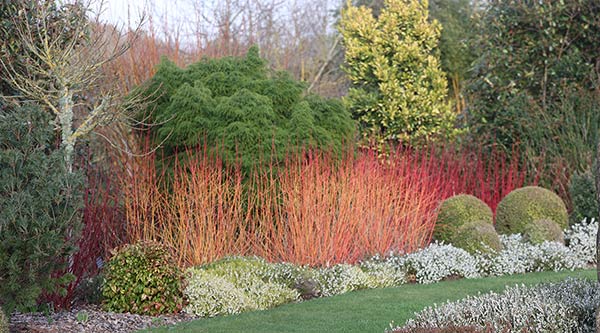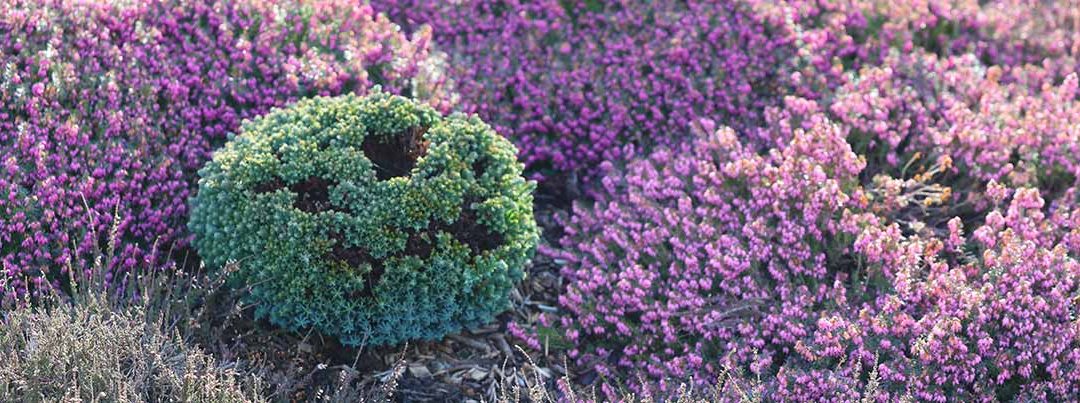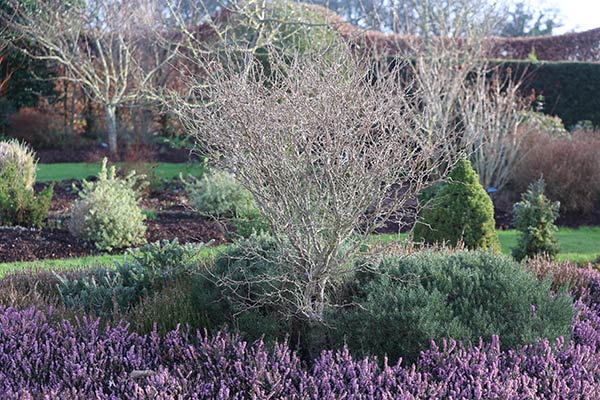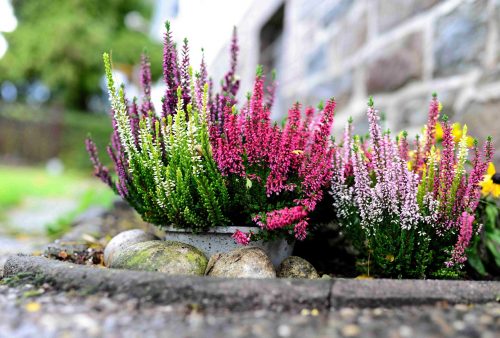Winter gardens often succumb to muted browns and greys, but heathers like Calluna ‘Alba Elegans’ defy the chill with their pure white spring blooms. Summer deepens their foliage, contrasting the fiery golden glow of Calluna vulgaris ‘Golden Spangles’ against the emerald green of Erica erigena, the Irish heath.
But winter showcases their true resilience. The deep green foliage of Erica carnea stands firm against the frost, while the bronze tapestry of Erica erigena warms the cold earth. Even amidst the snow, defiant blooms emerge: imagine the crimson spikes of Erica carnea ‘Winter Rubin’ or the soft pink bells of Erica carnea ‘Rosalie’, offering a vital source of winter nectar for pollinators. Erica carnea ‘Golden Starlet’ sparkles in the winter sun with its light green foliage and white flowers.
Beyond beauty, heaths and heathers provide practical benefits. Low-growing Calluna vulgaris offer shelter for small creatures, while taller varieties like Erica australis (which comes originally from Portugal / West Spain) act as windbreaks, protecting more delicate plants.
So, next time winter paints your garden grey, seek out the humble heather. Its quiet defiance and year-round vibrancy offer a reminder that beauty persists, even in the coldest months.
General guidelines are:
- Allmost all heathers prefer acidic soil with a pH level between 4.5 to 5.5.
- While most heathers require moist soil, avoid overwatering as this can lead to root rot.
- Most heathers, callunas and daboecias benefit from light pruning after they finished flowering to ensure bushier growth.
Spice up your garden with orange, red glowing Cornus alba ‘Sibirica and Cornus sanguinea ‘Midwinter Fire’ just behind your heathers! (source: Holme Gardens)

Driving through the New Forest, a national park in Hampshire, England, you can encouter a variety of heather species. Here are some of the most common heathers found in the area:
- Ling (Calluna vulgaris): This is the most widespread heather species in the New Forest, covering large areas of heathland. It blooms in late summer and fall, producing a vibrant purple-pink hue.
- Bell Heather (Erica cinerea): Bell Heather is another common species in the New Forest. It blooms in spring and early summer, producing bell-shaped flowers in shades of pink and purple.
- Cross-leaved Heather (Erica tetralix): Cross-leaved Heather is less common in the New Forest compared to Ling and Bell Heather, but it can be found in wetter areas, such as bogs and marshes. It blooms in summer and produces pink flowers.
- Heather (Erica spp.): Other species of Erica, such as Winter Heather (Erica carnea) and Cornish Heather (Erica vagans), can also be found in the New Forest, although they are less common.
These heather species play a vital role in the ecology of the New Forest, providing habitat for a variety of wildlife, including insects, birds, and reptiles.
Bud-blooming heathers are a special type of heather plant that offer a unique and long-lasting display of color, particularly during the autumn and winter months.



